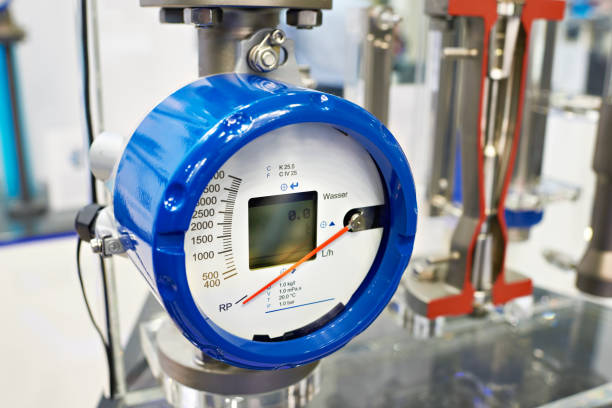Understanding the Miratic Flow Meter: A Key Tool in Fluid Measurement and Display Devices
Introduction
Flow meters are essential devices for accurately measuring fluid or gas flow rates within pipelines or containers. Among various types, the Miratic flow meter has gained significant popularity due to its precision and user-friendly display interface. Its design not only ensures accuracy in flow measurements but also facilitates real-time monitoring through its advanced display. This article explores how the Miratic flow meter functions, its core components, and how it benefits industries reliant on fluid control.
What is a Miratic Flow Meter?
A Miratic flow meter is a specialized instrument designed to measure the rate of fluid flow in systems accurately. It’s used across multiple industries, including water management, pharmaceuticals, chemical processing, and food production. This flow meter stands out for its ability to provide real-time flow data, often displayed on an integrated digital screen or connected display devices.
The Miratic flow meter offers high sensitivity and durability, essential qualities for maintaining consistent and reliable flow readings, even in challenging industrial environments. The addition of a display device ensures that operators can monitor flow rates visually and make necessary adjustments in real time.
How Does the Miratic Flow Meter Work?
Miratic flow meters operate based on the principles of fluid dynamics. They calculate flow rates by measuring the velocity of the fluid passing through the meter. The device senses flow changes and relays these as data, which is then converted into measurable output displayed on the connected device.
There are different types of flow meters, including turbine, ultrasonic, and electromagnetic types. Each type has its own mechanism for determining flow rates, but the Miratic flow meter generally relies on either a turbine or ultrasonic mechanism to provide accurate and consistent readings.
- Turbine Mechanism: In turbine-based flow meters, the fluid flows through a turbine that rotates based on the fluid velocity. This rotation is then detected by sensors and processed into flow rate data.
- Ultrasonic Mechanism: Ultrasonic flow meters use sound waves to detect fluid flow. Transmitters on both ends of the meter send and receive ultrasonic signals. The time difference between these signals is calculated to determine the flow rate.
The Miratic flow meter’s choice of mechanism depends on the application requirements. Regardless of the type, the accuracy and efficiency of these meters are complemented by their intuitive display devices.
Key Components of a Miratic Flow Meter with Display Device
The Miratic flow meter’s design integrates several key components to enhance accuracy and user experience. The primary components include:
- Flow Sensing Element: This is the main component that detects and measures the flow rate. Depending on the type, it could be a turbine or an ultrasonic sensor.
- Transducer: Converts physical flow data into electrical signals. The transducer is vital in ensuring that the flow rate is recorded accurately.
- Display Device: The display device shows real-time data, such as the current flow rate, cumulative flow volume, and sometimes additional parameters like temperature and pressure. This can be a digital LCD or LED screen, providing clear and accessible readings.
- Signal Processing Unit: This unit processes raw data collected by the sensors and converts it into understandable metrics displayed on the screen.
- Power Source: Most Miratic flow meters are either battery-operated or connected to an external power source, ensuring consistent operation.
Importance of Display Devices in Miratic Flow Meters
The integrated display in a Miratic flow meter is not just a convenience; it is essential for real-time monitoring and decision-making. Operators need to monitor flow rates accurately to ensure the efficiency and safety of industrial processes. By showing instant feedback, the display allows users to make prompt adjustments as necessary, thereby enhancing operational accuracy and safety.
Benefits of Integrated Display Devices
- Real-Time Monitoring: The digital display offers immediate feedback on flow rates, enabling quick adjustments.
- Data Accuracy: Display devices minimize human error by providing accurate, immediate readings that are easy to understand.
- User-Friendly Interface: With an intuitive interface, operators can quickly learn to read and interpret data, regardless of experience level.
- Alarm Systems: Some advanced models come with built-in alarms that notify operators of any irregularities in flow, making it easier to prevent potential issues.
Types of Miratic Flow Meters with Display Devices
Different types of Miratic flow meters are used depending on specific requirements. Each model offers unique features suited for distinct environments and types of fluids.
- Turbine-Based Miratic Flow Meters: These are ideal for measuring clean, non-corrosive liquids. Turbine flow meters are cost-effective and provide high precision, though they require regular maintenance to avoid blockages.
- Ultrasonic Miratic Flow Meters: Known for their versatility, ultrasonic flow meters can measure both liquids and gases. They’re perfect for applications where accuracy is paramount and can work effectively even with large pipe diameters.
- Electromagnetic Miratic Flow Meters: Suitable for conducting liquids, electromagnetic flow meters are corrosion-resistant, making them ideal for chemically aggressive fluids. They rely on magnetic fields to detect flow and are often preferred in wastewater and chemical processing industries.
Applications of the Miratic Flow Meter in Various Industries
The Miratic flow meter’s versatility allows it to be used across numerous industries. Here are a few key applications:
- Water Treatment Plants: The meter helps in regulating water flow, ensuring efficiency in processing and treatment operations.
- Pharmaceuticals: Precision is essential in pharmaceutical manufacturing. Miratic flow meters are used to control the flow of liquids used in formulations, ensuring accuracy in measurements and quality control.
- Food and Beverage Industry: These flow meters aid in monitoring the flow of ingredients, ensuring consistency in recipes and compliance with health standards.
- Chemical Processing: Many chemicals require precise control over flow rates to ensure safe handling and reaction processes. Miratic flow meters provide the necessary precision and durability for these applications.
- Oil and Gas: Flow meters help in controlling and monitoring the flow of oil and gas, essential in both upstream and downstream processes.
Advantages of Using the Miratic Flow Meter
The Miratic flow meter has several benefits that make it a valuable tool in industrial applications:
- Enhanced Accuracy: The sensors and transducers in the Miratic flow meter ensure that readings are accurate, reducing the margin for error.
- Reliability in Harsh Environments: Built for industrial applications, the Miratic flow meter is rugged and can withstand harsh environmental conditions.
- Ease of Use: The integrated display device simplifies data interpretation, reducing the need for specialized training.
- Versatile Applications: These meters are compatible with a variety of fluids, making them useful across different industries.
- Real-Time Data Access: The display device allows operators to access flow information instantaneously, helping in quick decision-making.
Common Challenges and Troubleshooting Tips
While the Miratic flow meter is highly reliable, users may occasionally encounter issues. Below are some common problems and troubleshooting tips:
- Inaccurate Readings: This may occur due to debris blocking the sensing element or a malfunctioning transducer. Cleaning and routine calibration can resolve this issue.
- Display Malfunctions: If the display device fails, it could be due to power issues or a damaged screen. Checking the power source and replacing faulty parts is recommended.
- Signal Interference: Electromagnetic flow meters can experience interference from nearby electrical equipment. Ensuring proper installation distance and shielding can help prevent this.
- Flow Restriction: If fluid flow is restricted, it could indicate a blockage within the meter. Regular maintenance and cleaning are crucial for preventing flow disruptions.
Conclusion
The Miratic flow meter, with its advanced display device, is an essential tool in measuring and monitoring fluid flow accurately. It combines accuracy, ease of use, and durability, making it suitable for various industrial applications. From water treatment to pharmaceuticals, these flow meters ensure that fluids are measured and controlled precisely, enhancing operational efficiency and safety.
Frequently Asked Questions (FAQs)
- What is the Miratic flow meter used for?
- The Miratic flow meter is used to measure fluid or gas flow rates accurately, providing real-time data for various industries.
- How does a Miratic flow meter work?
- It detects fluid velocity, processes this data, and displays it on a screen, usually through turbine or ultrasonic technology.
- Can the Miratic flow meter handle both liquids and gases?
- Yes, certain models, like ultrasonic Miratic flow meters, can measure both liquids and gases effectively.
- Why is the display device important in a Miratic flow meter?
- The display device provides real-time monitoring, making it easier for operators to manage flow rates accurately and make adjustments promptly.
- Are Miratic flow meters suitable for harsh environments?
- Yes, they are designed to be durable and can withstand challenging industrial conditions.
- How often should I calibrate a Miratic flow meter?
- Calibration frequency depends on usage and industry standards, but regular calibration is recommended for accurate readings.
- What types of fluids can a Miratic flow meter measure?
- Miratic flow meters can handle a wide range of fluids, from water to aggressive chemicals, depending on the specific model used.




